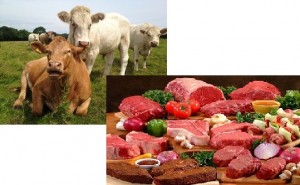 Zearalenone (ZEA) is a mycotoxin present in grains and other plant-derived foods due to fungal contamination. Zeranol, a metabolite of zearalenone is used as a non-steroidal anabolic growth promoter in beef production in the US and Canada. ZEA and its metabolites mimic the actions of natural estrogens in the human body and might cause undesirable health effects in the long run. Exposure to these compounds for women, especially during the onset of puberty can have a major impact on her future risk of developing breast cancer. This modeling effort is supplementary to the Jersey Girl Study which is a cross-sectional analysis among 163 girls (aged 9-10 years) from New Jersey to measure urinary mycoestrogens and analyze possible relationships to body development.
Zearalenone (ZEA) is a mycotoxin present in grains and other plant-derived foods due to fungal contamination. Zeranol, a metabolite of zearalenone is used as a non-steroidal anabolic growth promoter in beef production in the US and Canada. ZEA and its metabolites mimic the actions of natural estrogens in the human body and might cause undesirable health effects in the long run. Exposure to these compounds for women, especially during the onset of puberty can have a major impact on her future risk of developing breast cancer. This modeling effort is supplementary to the Jersey Girl Study which is a cross-sectional analysis among 163 girls (aged 9-10 years) from New Jersey to measure urinary mycoestrogens and analyze possible relationships to body development.
(Read more on the Jersey Girl Study here.)
We developed a comprehensive PBPK model along with a detailed dose estimation based on food surveys to establish dose-biomarker relationships for Jersey Girl Study participants. The PBPK model utilizes current scientific knowledge regarding human metabolism of zeranol and uses in vitro-in vivo extrapolation to utilize hepatic and gut microsomal data. Read the full abstract here.
Mukherjee D., Royce S.G., Alexander J.A., Buckley B., Isukapalli S.S., Bandera E.V., Zarbl H. and Georgopoulos P.G. (2014). Physiologically-based toxicokinetic modeling of zearalenone and its metabolites: Application to the Jersey Girl study. PloS One (in press).